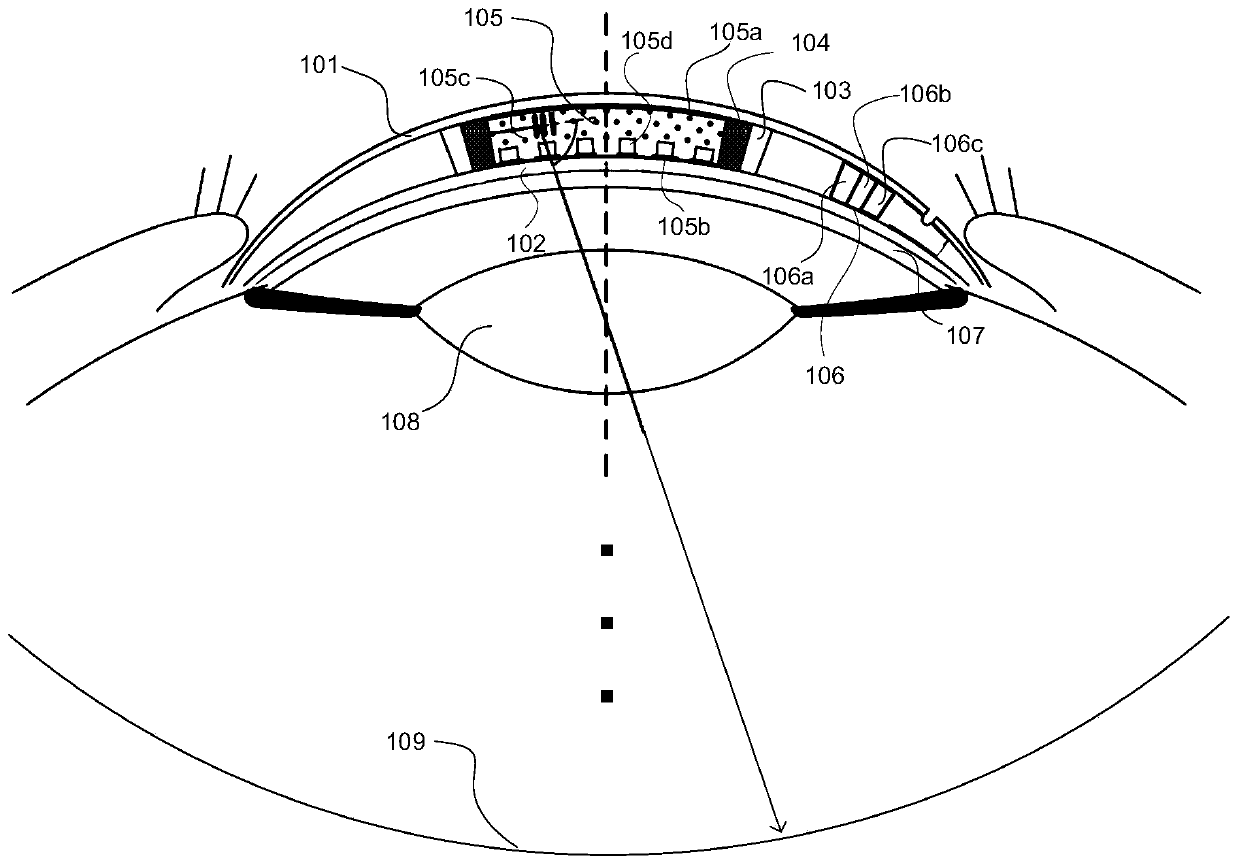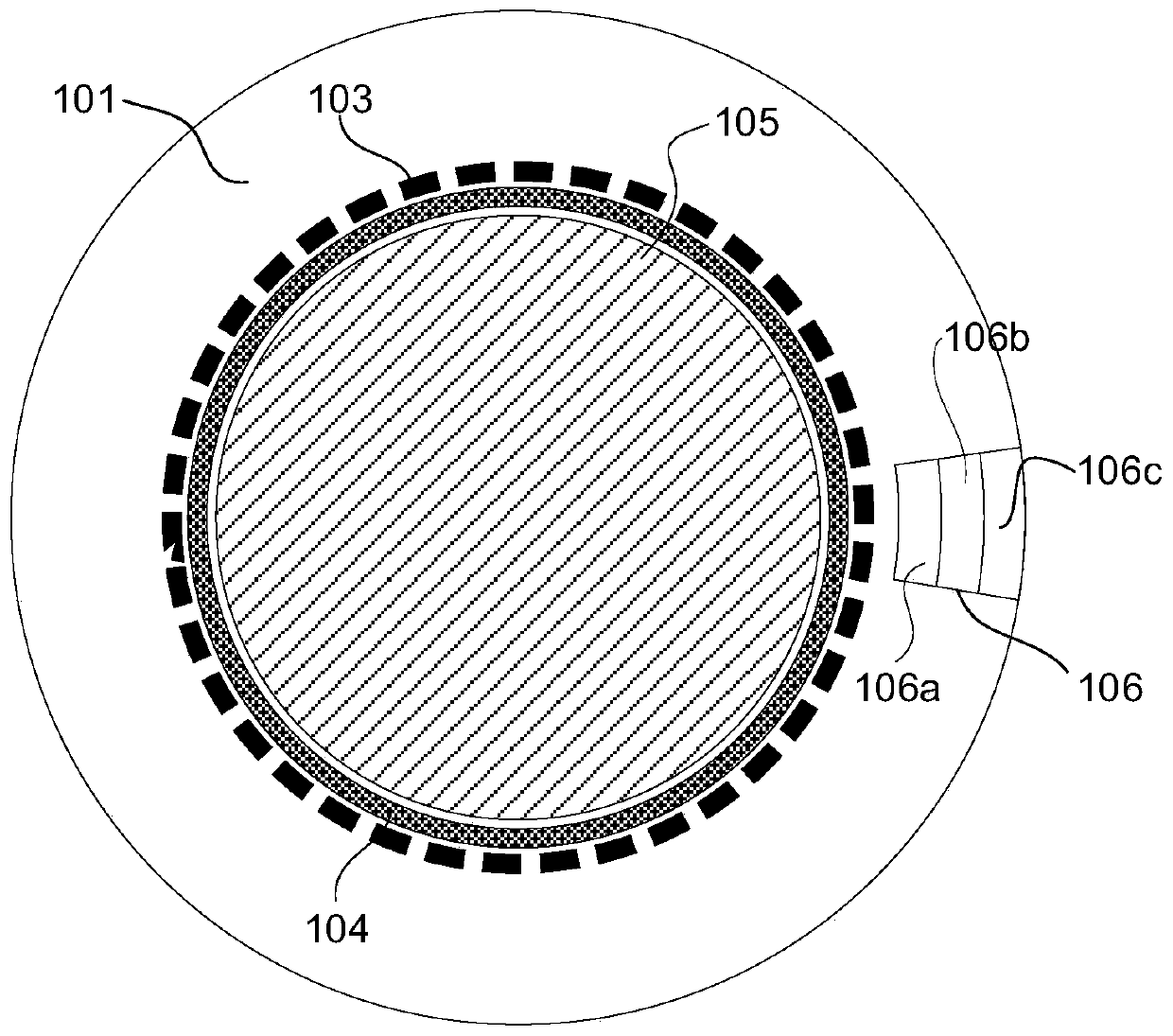Intraocular display device based on retinal scanning
A retinal scanning and display device technology, applied in static indicators, glasses/goggles, optics, etc., can solve the problem of inability to achieve foveal imaging, inability to fundamentally solve the time delay of high-resolution image processing and device power consumption and other problems, to achieve the effect of reducing the total number of pixels, reducing system complexity, and reducing device power consumption
- Summary
- Abstract
- Description
- Claims
- Application Information
AI Technical Summary
Problems solved by technology
Method used
Image
Examples
Embodiment Construction
[0017] Such as figure 1 with figure 2 As shown, the intraocular display device based on retinal scanning shown in this embodiment includes: a first flexible substrate 101 on the same side as the eyelid of the human eye, a second flexible substrate 102 on the same side as the cornea of the human eye, and a light emitting substrate disposed therebetween. Diode array 103, light collimator 104, electrically controlled liquid crystal grating 105 for adjusting light direction, and control unit 106, wherein: the light-emitting end face of light emitting diode array 103 is connected with light collimator 104, and control unit 106 is connected with light emitting diode The array 103 is connected to an electrically controlled liquid crystal grating 105 .
[0018] The LED array 103 is an annular array composed of a plurality of LEDs, and the number of LEDs Where: R is the radius of the eyeball, D is the diameter of the cone cells, ρ is the density of the cone cells, and x is the ec...
PUM
 Login to View More
Login to View More Abstract
Description
Claims
Application Information
 Login to View More
Login to View More - R&D
- Intellectual Property
- Life Sciences
- Materials
- Tech Scout
- Unparalleled Data Quality
- Higher Quality Content
- 60% Fewer Hallucinations
Browse by: Latest US Patents, China's latest patents, Technical Efficacy Thesaurus, Application Domain, Technology Topic, Popular Technical Reports.
© 2025 PatSnap. All rights reserved.Legal|Privacy policy|Modern Slavery Act Transparency Statement|Sitemap|About US| Contact US: help@patsnap.com


